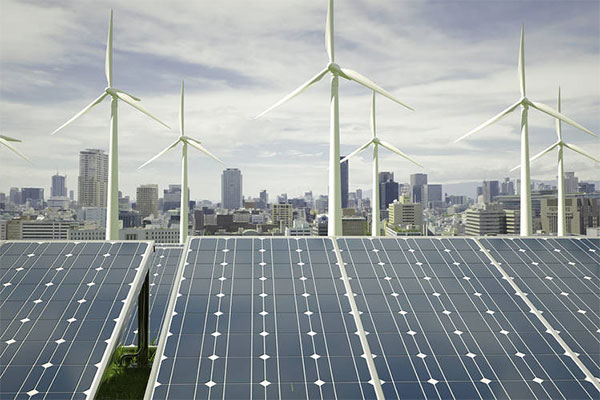Driven by strong solar and wind power growth, electrical generation by renewable energy sources (i.e., also including biomass, geothermal, hydropower) accounted for 20.45% of total U.S. production during the first three-quarters of 2021, according to a SUN DAY Campaign analysis of new data released by the U.S. Energy Information Administration (EIA).
The latest issue of EIA’s “Electric Power Monthly” report (with data through September 30, 2021) also reveals that for the first nine months of 2021, solar (including distributed rooftop systems) and wind increased by 24.61% and 10.89% respectively compared to the same nine-month period in 2020. Combined, they grew by 15.00% and accounted for more than one-eighth (12.59%) of U.S. electrical generation (wind – 8.50%, solar – 4.09%). Moreover, wind and solar combined now provide more than three-fifths (61.55%) of the generation by renewable sources.
In addition, geothermal posted a gain of 2.75% while electricity generated by wood + other biomass increased by 1.71%. Combined, all non-hydro renewables grew by 12.8%.
Reflecting worsening drought conditions, though, hydropower fell by 12.47%. Nonetheless, all renewables combined – including hydropower – produced 4.05% more electricity than a year earlier. However, inasmuch as electricity generation by all sources increased by 3.26%, renewables’ share of the total increased only slightly – from 20.30% in 2020 to 20.45% this year.
Renewable sources also expanded their lead over nuclear power, providing 10.72% more electricity than the nation’s atomic power plants (18.47% of the total). Natural gas remained as the top source of U.S. electrical generation with a 37.57% share but down from 40.75% a year ago. Coal rebounded into second place (with a 22.60% share), growing 25.31% compared to the first three-quarters of 2020.
Longer-term trends, though, still suggest the gradual and probably accelerating displacement of coal and nuclear power by renewable energy sources, especially solar and wind. Compared to the first nine months of 2016 (i.e., five years ago), coal-generated electricity has declined by 23.08% and nuclear power is down by 5.33%. Meanwhile, renewables’ share of total electrical generation has grown from 15.10% to 20.45% with wind expanding by 65.23% and solar increasing three-fold.
“Inasmuch as they have maintained an overall faster rate of growth than any other energy sources over the past half-decade and longer, it seems safe to say that solar and wind will eventually become the nation’s primary electrical producers,” noted the SUN DAY Campaign’s executive director Ken Bossong. “They now have a growing lead over nuclear power; surpassed coal in 2020 and will likely do so again next year; and are rapidly cutting into natural gas’s current dominance.”
# # # # # # # # #
NOTE: Unless otherwise indicated, the electricity figures cited above include EIA’s “estimated small-scale solar photovoltaic” (e.g., rooftop solar systems) which accounts for 29.97% of total solar output and almost six percent (5.99%) of total net electrical generation by renewable energy sources.














Comments